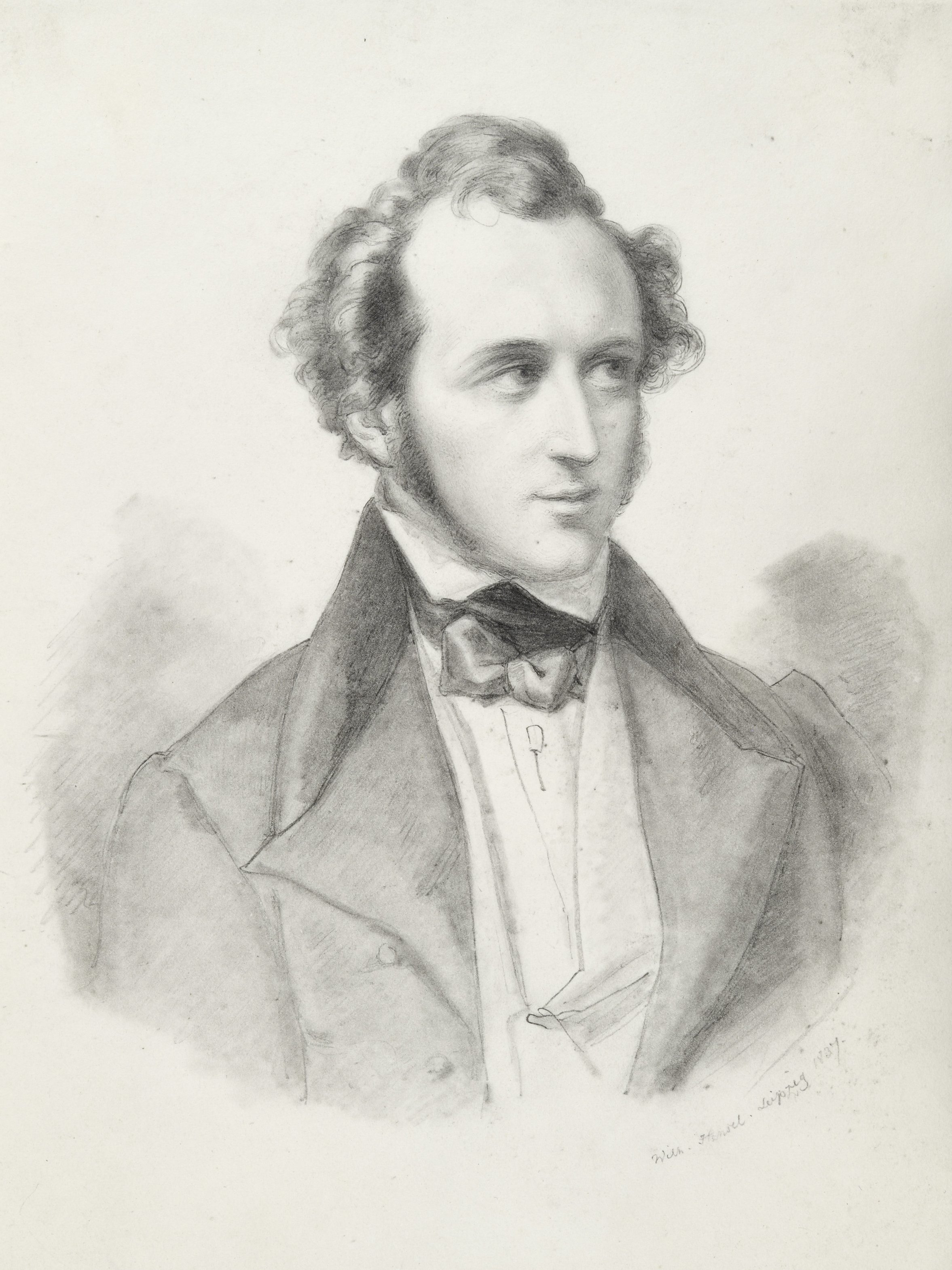- History

Mendelssohn went on a three-year educational trip in his early twenties and brought back a great deal of inspiration for his later works.
Mendelssohn went on such a three-year educational journey, which took place in two stages, in his early twenties. The first phase took him to England in 1829, with a longer stay in London and shorter visits to Scotland and Wales. The capital of the British Empire was a rewarding destination for German musicians: Handel had found a second home in London, and the old Haydn celebrated the greatest successes of his life there.
Beethoven’s Ninth Symphony was commissioned by the Philharmonic Society, and Carl Maria von Weber had conducted the acclaimed premiere of his Oberon there three years before Mendelssohn’s journey. Mendelssohn was welcomed with open arms, received in the highest circles and was able to establish a network that lasted long beyond his death. His music enjoys a special status in the United Kingdom to this day.
After spending the winter of 1829/30 at home in Berlin, he travelled to the south. Via Munich and Vienna – where, as he wrote to his family, he ”conversed in Italian every morning at 7 for an hour” with an Italian – Mendelssohn arrived in Venice, the land where the lemon trees blossom: “Italy at last! And what I have all my life considered as the greatest possible felicity is now begun, and I am basking in it.”
He spent several days in Florence and finally arrived in Rome on 1 November 1830. There Mendelssohn naturally followed in Goethe’s footsteps: “Among my home pleasures I include that of reading for the first time Goethe’s Journey to Italy.” He was not, on the other hand, particularly impressed by the musical taste and standard of the Italians (“the orchestras are worse than anyone could believe; both musicians and a right feeling for music are wanting”). He rarely performed in public concerts and instead of Italian composers, the Frenchman Hector Berlioz was the most important musician he met in Rome.
After a visit to Naples, Mendelssohn was in Rome again in early summer of 1831 and from there began the journey home by way of Florence on the western route, passed through Genoa and Milan and travelled across Switzerland to Germany. He spent two months in Munich, long enough to almost become engaged to the pianist Delphine von Schauroth; it remained a brief flirtation. Then Paris was on the itinerary again, a city he had already visited as a child, and, as in Rome, Mendelssohn expressed his disappointment over what seemed to him the superficial aesthetic sense in musical circles.
Nevertheless, he met Chopin, who was approximately the same age and with whom he cultivated a long friendship, although Chopin’s compositions remained alien to him. Mendelssohn did not take much pleasure in the Paris salons, during which someone always expected him to display his expertise at the piano, and he was harshly critical of Parisian theatre audiences: “Politics and sensuality are the two grand points of interest, round which everything circles.” Mendelssohn had had enough of Paris, and he never returned there again. He would later pay several more visits to England, however, where this European tour came to an end.
Mendelssohn set out on his journey through a half dozen European countries not least because “I intend to compose many things there”, as he wrote to his teacher Carl Friedrich Zelter before his departure. The inspiration for the “Scottish” Symphony was only one of many fruits of his experiences. Sometimes he was so impressed by the grandeur of nature that words failed him, and instead of written accounts he let the music alone speak, as after his visit to the mysterious Fingal’s Cave on the Hebrides island of Staffa: “In order to make you understand how extraordinarily the Hebrides affected me, the following came to my mind there,” he wrote, and followed these words with several lines of music.
Works of art and beauties of nature always inspired Mendelssohn to music when he could put them in a dramatic context, when there was literally a story to tell with them. That was the case with Fingal’s Cave, which the writer James Macpherson had shrouded in imaginary legends, and Holyrood Palace, where Mary Stuart had once lived, but not with the mountains of Switzerland, whose beauty is impressive without any human involvement. He preferred to turn to pencil and brush where the landscape was simply nature, without historical relevance, like the Alpine massifs or idyllic Alpine meadows.
Works of art and beauties of nature always inspired Mendelssohn to music when they told a story.
All told, the musical results were good: he brought home many sketches and drafts, and three Venetian Gondola Songs recall the city on the lagoon. The first versions of the Hebrides Overture, reflecting his trip to Scotland, and the First Walpurgis Night were composed in Italy. The “Italian” Symphony was largely drafted there (whereas the “Scottish” still had to develop further), as well as the G minor Piano Concerto and several sacred works in Latin and German, which the exchange with church musicians, Palestrina scholars and music collectors had also furthered. A number of his best-known works thus bear traces “of foreign lands and peoples” – to quote the title of a work by his contemporary and friend Robert Schumann.
Above all, however, after his long journey, it was now clear to Mendelssohn what he wanted to do with his life: to spend his days as a productive and performing musician – from his homeland. Travelling around the world as a virtuoso like Franz Liszt or Niccolò Paganini was out of the question for him. As he wrote to his father from Paris on 19 December 1831: “I am resolved therefore to make the attempt in Germany, and to remain and work there so long as I can continue to do so, and yet maintain myself.”